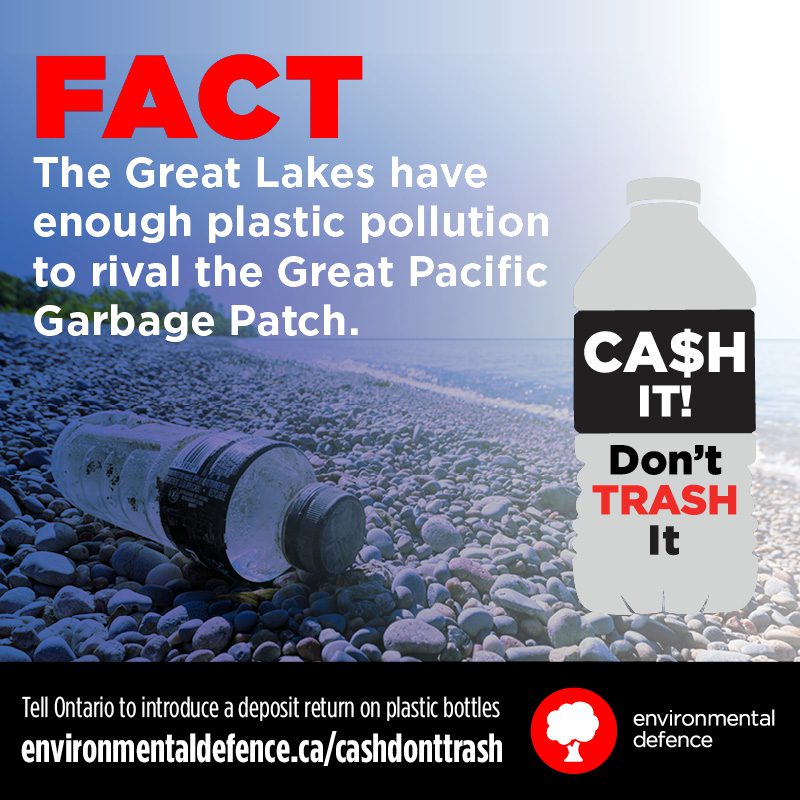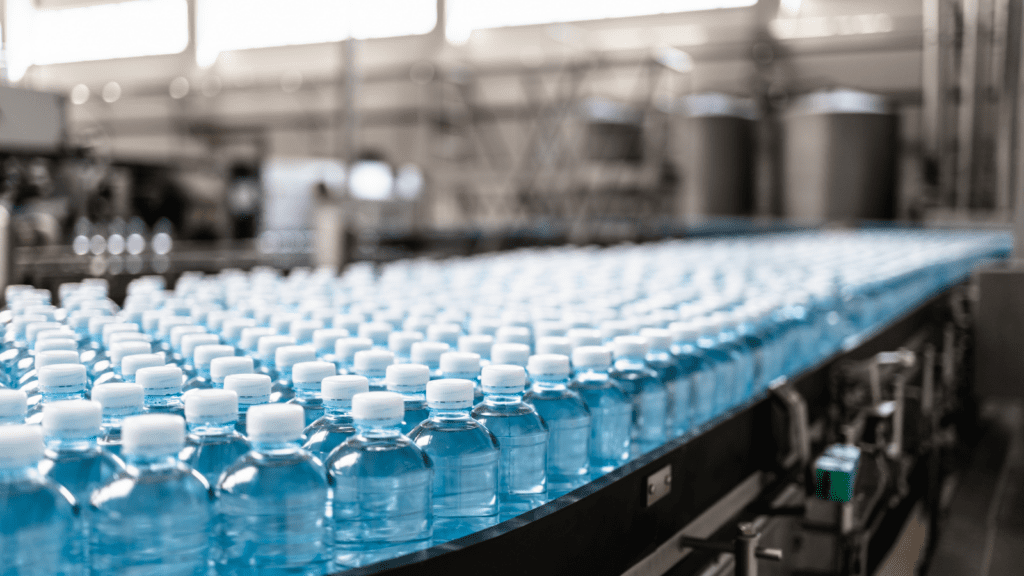You may have heard of the Great Pacific Garbage Patch, the floating islands of plastic waste the size of Texas in Pacific Ocean. But did you know that there are similar concentrations of plastic in the Great Lakes?
 A staggering 80 per cent of the litter in the Great Lakes is plastic. This pollution is threatening the health of the Great Lakes ecosystem and the source of drinking water for 40 million people. Contributing to this problem are plastic water bottles: about a billion bottles are not recycled in Ontario each year, ending up in landfills or littering the environment instead. Our solution: put a price on the plastic.
A staggering 80 per cent of the litter in the Great Lakes is plastic. This pollution is threatening the health of the Great Lakes ecosystem and the source of drinking water for 40 million people. Contributing to this problem are plastic water bottles: about a billion bottles are not recycled in Ontario each year, ending up in landfills or littering the environment instead. Our solution: put a price on the plastic.
That’s what we suggest Ontario does in our new report released today, Turning the Plastic Tide: How to Protect the Great Lakes and Fight Plastic Pollution. In the report, we outline a plan that would make polluters pay, would charge a fair price for industrial water use, and would protect the Great Lakes for current and future generations.
Ontario is one of the few Canadian jurisdictions without a deposit return program for plastic bottles and, as a result, has the lowest recycling rate for plastic bottles in the country. Less than half of the bottles sold in Ontario make their way to recyclers—that means about 18,500 tonnes of polyethylene terephthalate (PET) bottles, nearly a billion plastic bottles, are not recycled in Ontario each year. Is it any wonder then that bottle caps and bottles are among the most common items of litter found on our shorelines?
Canadian provinces and territories with deposit return programs recycle over three quarters of their bottles. And Ontarians know these systems work—the province has a very successful deposit return program for wine and beer bottles: 98 per cent of beer containers are returned for reuse.
Not only could a deposit return increase recycling rates and reduce plastic litter, but it could generate much needed funds to help with other Great Lakes issues, like the massive algal blooms that have resurfaced in Lake Erie. A price on plastic would be a great way to remedy the severe funding shortage for Great Lakes protection while reducing plastic waste.
The problem with bottled water
Plastic water bottles are largely unnecessary, but these bottles leave a lasting impact on the environment. Bottled water takes 2,000 times more energy to produce and transport than tap water. This energy consumption is not only wasteful but contributes to climate change. Furthermore, water bottle companies take our water and sell it back to us at 270,000 times the cost they paid for it.
In most communities, we don’t need plastic water bottles. Ontario has some of the best tap water in the world. Some jurisdictions are looking to ban the plastic water bottles. But at the very least, we need to figure out a way to collect the bottles, and keep them out of the environment.
How you can help
Take action to help protect our waters: tell Ontario to “Cash it! Don’t trash it” by introducing a deposit return program to reduce plastic waste and fund efforts that keep our waterways clean.
You can also pledge to use a refillable container instead of disposable plastic water bottles.
i. Beverage Container Recovery in Ontario: Achieving Greater Performance and Sustainability. Draft CBCRA Industry Stewardship Plan for Submission to Waste Diversion Ontario. (2013). Canadian Beverage Container Recycling Association. Retrieved from http://www.wdo.ca/files/9713/7935/8851/CBCRA_Beverage_Container_Draft_IS…
ii. Montreal’s bottled water ban musings has industry’s attention. http://www.cbc.ca/news/canada/montreal/montreal-bottled-water-ban-lobbyists-1.3500422









